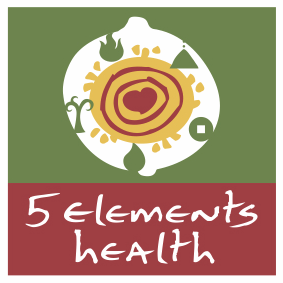Health questionairre
At your first visit you will be required to fill out an extensive health questionnaire. Please be sure to arrive 15 minutes before your scheduled appointment time to fill out this form, otherwise you can download this form from this website, print and fill out, then bring it along with you to the first visit.
Frances will go over your health history and ask questions in order to obtain an individual diagnosis for your imbalance(s). The treatment will then begin with palpation (light touch) of your lower legs and arms, hara (abdomen) and your wrist pulses, in order to assess the current state of your channel system, overall constitution and imbalances. Please wear loose clothing to allow easy access to these areas of the body.
What's included in a treatment?
Treatments are usually divided into two steps, the root and branch treatment methods. The root treatment addresses core energetic and structural imbalances while the branch treatment both supports the root and addresses relief of current symptoms. Techniques vary from treatment to treatment based on presenting signs and symptoms and will include acupuncture, and may also include some of the following:-
-
Acupuncture – gentle Japanese techniques including inserted as well as non-inserted methods
-
Moxibustion – burning the herb mugwart on or above the skin to generate warmth and encourage blood circulation
-
Cupping – suction created on the skin by glass cups to encourage local blood circulation and relax muscles
-
Acupressure – manual pressure is used to stimulate the channels and acupuncture points to encourage the flow of qi and relax muscles
-
Sotai – a Japanese form of movement therapy to adjust structural imbalances of the muscular and skeletal systems
-
Ear acupuncture – points found on the ear are stimulated in order to regulate the body’s internal organs, structures, and functions.
-
Dietary guidelines – individualised advice including: Chinese Food therapy, and a combination of whole foods, western knowledge of modern nutrition and supplements
-
Shonishin – Japanese kids acupuncture – non-needle methods with small metal tools which are glided and tapped on the skin in order to regulate the channel system
Is acupuncture safe?
Yes, but only when performed by a highly qualified acupuncturist. When selecting an acupuncturist check that they are a member of a professional acupuncture association, this ensures that they have adequate training in acupuncture to perform a safe, high quality treatment. See Australian Acupuncture and Chinese Medicine Association (AACMA) and Chinese Medicine Board of Australia (AHPRA) for more information.
Sterilised Needles: Please be assured that, for insertion purposes, this clinic only uses pre-sterilised, surgical stainless steel needles. They are in a sealed blister pack and are disposed of immediately after use.
Will acupuncture hurt?
Japanese acupuncture is very gentle. The needling methods used are shallow and virtually painless. People do not always realise the needles have been inserted. Occasionally you may feel a slight sting, like a mosquito bite. This sensation only lasts during insertion. After the needles are inserted many people feel nothing, some feel relaxed and others feel energised.
Are all acupuncturists the same?
Prospective patients should always ask about the training and experience of the acupuncturist that they intend to see. A highly qualified acupuncturist gets thousands of hours of specialised training in acupuncture. Many other therapists who practice acupuncture may have only 100 hours or so of training, some as little as a weekend. This is a huge difference. They may be excellent providers in their primary area of training and expertise, but are often less accomplished in acupuncture diagnosis and treatment.
How many treatments will I need?
Treatments are usually scheduled once a week, although initially for a week or two, you may need twice weekly treatment to stabilise distressing symptoms (ie. acute pain). With simple conditions people may see results in one or two treatments, while others may need 6-8 treatments before experiencing a notable difference.
Acute conditions will generally resolve quickly, while chronic conditions may take many months of treatment to resolve. For chronic conditions you should allow at least one month of treatment for every year you have had the condition. Some conditions may never completely resolve – in these cases acupuncture may be used to lessen side-effects of medication and improve wellbeing.
Effects are cumulative and the recovery rate depends on many factors: the length of time an illness has been present, the severity and complexity of illness, patient compliance with lifestyle and dietary suggestions, and an individual’s unique response to treatment.
Acupuncture works with your body, the healthier you are the faster you will improve, your effort will increase your recovery times and lessen the number of treatments required.
Will acupuncture interfere with other treatments/medication?
It should not interfere, rather it should complement or enhance your other therapies. As nothing is ingested with acupuncture, medications and herbs/supplements will not be effected, and may over time be reduced as the positive effects of acupuncture increase. However, it is not recommended that medications be discontinued or reduced without your doctors advice.
Physical therapies such as chiropractic, osteopathy, physiotherapy and massage will be enhanced by acupuncture’s muscle relaxing effect.
